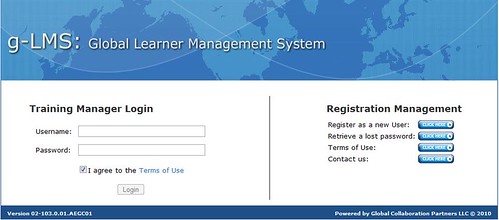
We've got a big announcement that will probably take place next week, but I'm so excited about it I find I need to use this blog as a rough draft of whatever press release we end up issuing.
We've been sitting on some technology we had in our back pocket for quite some time as we concentrated on growing and improving our e-learning content catalog and getting it the heck out in the marketplace.
In the process of talking to the marketplace, though, we found we were hearing over and over again: content alone is often not enough (compliance training by definition needs to be tracked), but commercial Learning Management Systems (LMSs) are often way too much tech for small and medium-sized companies. The "enterprise solution" is made for really large enterprises!
Here's what our clients and prospects have been telling us they need to be able to do in order to efficiently manage training:
- Add learners to courses (or assign courses to learners)
- Manage passwords/logins
- Quickly and clearly see who has completed the training
- Quickly and clearly see who needs a fire lit under them
- Download reports in a form that can be further manipulated, imported into other company record-keeping systems, etc.
Here are some of the features of standard commercial LMSs that our clients and prospects specifically did NOT want or need:
- Elaborate succession planning tools
- Automated gap analysis tools
- A bunch of different reports on all the possible minutiae of learners' activities
- Months of study and specialized training just to have a clue how to run the damn thing
Slap to the forehead - we realized we already had the roots of just what these people have been telling us in some coding for tools we'd created in the past, and all we needed to do was pull it all together with the features we're hearing this demand for, and voila, the GCP's g-LMS - Global Learner Management System - will most likely launch at the end of the week!
It's a super thin application - tiny on the server, very obvious and intuitive interface for both learners and training managers (and our administrators who will run it in the background). It's elegant without being fancy at all.
For now we'll be hosting it, as that's what the market's been telling us to do. But down the road, we'll be able to license it to clients who want to run it on their own servers - we built the basics into the tool to do just that and will only have to tweak a few things to be able to deliver on that capability.
Also... nope, I'm getting ahead of myself; let's just get this thing launched this week! Stay tuned for a real live press release, and a demo site where you can try it for yourself. Can't wait to hear what you think!

